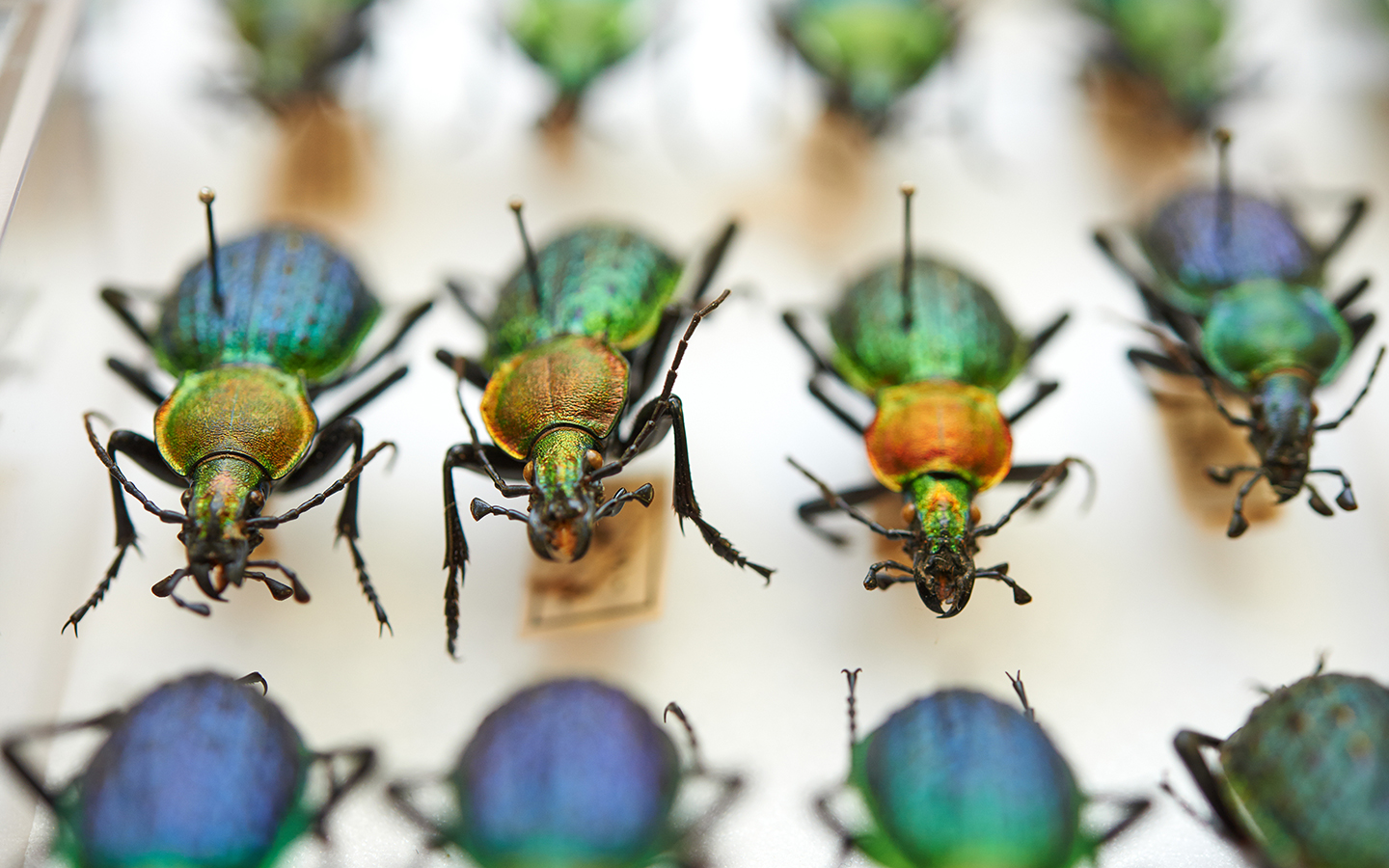
COLLECTION
The scientific collections form an important basis for research at the Leibniz Institute for the Analysis of Biodiversity Change (LIB). The archive of living things, fossils and minerals provides our researchers with information about past and present times. The objects and data reflect the changes in species as well as their environment and allow predictions for further development.
The 15 million objects from the fields of zoology, geology-palaeontology and mineralogy have been collected over centuries in all parts of the world. Today, scientists from all over the world use them to research the development and change of species. In their entirety, our collections give a comprehensive impression of the diversity of living things on our planet. The large number and diversity of the specimens make the LIB a reference centre for global biodiversity research. They are made accessible, researched, consistently developed and digitally recorded.
The collections document the changes and the sometimes dramatic decline of species in habitats that are influenced by humans and climate change. With the help of the archives, the species population of earlier times can be precisely reconstructed, developments can be tracked and it can be determined which animal species disappear in the course of change.
While the five million collection objects in Bonn represent the animal groups, the Hamburg collections are continuously expanding to include not only zoological but also objects from geology-palaeontology and mineralogy. The collections of fish, ungulates, crustaceans, mites, tunicates and the few- and many-bodied animals preserved at the Hamburg site are among the most important of their kind in the world. The earthworm collection is even the richest in types worldwide. The mineralogical collections in Hamburg include a large number of different minerals, for example samples of meteorites. More than 100,000 fossil preserved objects are kept in the Geological-Palaeontological Collections in Hamburg, which tell the story of life on our planet.
The collections in Bonn include vertebrate and arthropod specimens as well as tissue and DNA samples. They are divided into dry collections (vertebrate dermoplastics and bellows as well as skeletal material, needled arthropods, microsamples), wet collections in ethanol (vertebrates & arthropods, additionally tissue samples) and the biobank (frozen or ultracold tissue/DNA collections). They are supplemented by extensive digital image data collections as well as historical documents and evidence in written form (Biohistoricum). In addition, there is a fundamental responsibility for the documentation of the regional fauna of the Rhineland as well as the integration of evidence from Germany-wide and European monitoring programmes.





